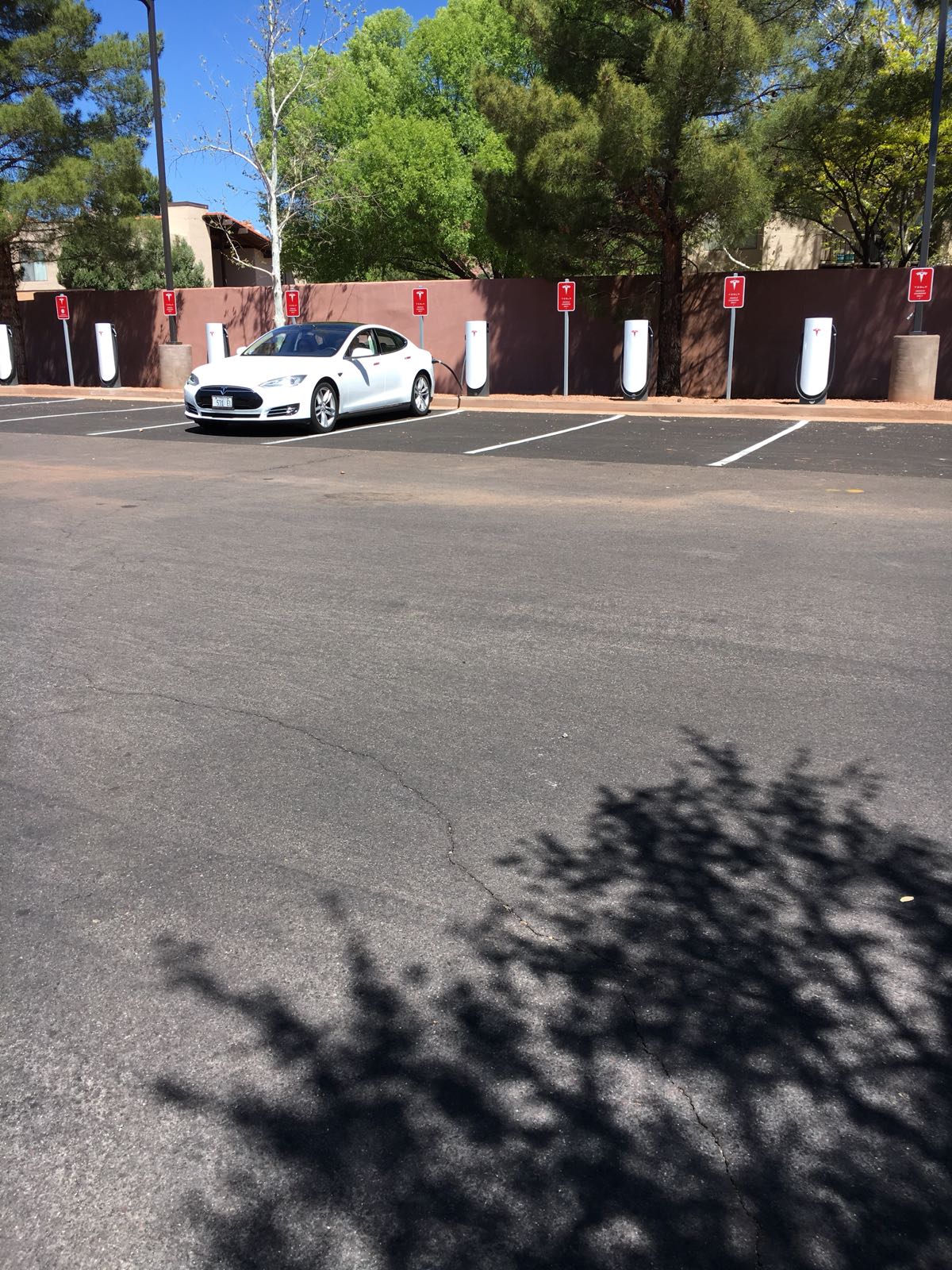Welcome to Tesla Motors Club
Discuss Tesla's Model S, Model 3, Model X, Model Y, Cybertruck, Roadster and More.
Register
Install the app
How to install the app on iOS
You can install our site as a web app on your iOS device by utilizing the Add to Home Screen feature in Safari. Please see this thread for more details on this.
Note: This feature may not be available in some browsers.
-
Want to remove ads? Register an account and login to see fewer ads, and become a Supporting Member to remove almost all ads.
You are using an out of date browser. It may not display this or other websites correctly.
You should upgrade or use an alternative browser.
You should upgrade or use an alternative browser.
Supercharger - Sedona AZ
- Thread starter gjunky
- Start date
Ed Hart
Member
Ah....right next to Cucina Rustica, a fabulous Italian restaurant.
Well....this makes it much easer to "do" Sedona and surroundings.
Thanks, everyone, for the updates
Well....this makes it much easer to "do" Sedona and surroundings.
Thanks, everyone, for the updates
Tyl
Active Member
Don TLR
Active Member
Evoforce
Active Member
Drat! But better than nothing.It looks like the Sedona superchargers are the new lower power urban ones.
ItsNotAboutTheMoney
Well-Known Member
It looks like the Sedona superchargers are the new lower power urban ones.
As a potential future 3SR owner, I'd call them them the sufficiently powerful ones.
Drat! But better than nothing.
It may be part of a new strategy for Tesla or it may just be due to local power availability. For someplace like Sedona, it makes sense to have slower chargers. Anyone who goes through Sedona going anywhere else is not in a hurry to get there. Most of the use of those chargers will be locals and people who are staying in the area. It's also a laid back town.
Evoforce
Active Member
It may be part of a new strategy for Tesla or it may just be due to local power availability. For someplace like Sedona, it makes sense to have slower chargers. Anyone who goes through Sedona going anywhere else is not in a hurry to get there. Most of the use of those chargers will be locals and people who are staying in the area. It's also a laid back town.
I'm not saying you are wrong... but I still want to spend the least amount of time on a charger as possible.
DriverOne
Member
I suspect the 72A chargers are aimed at local non-homeowner Model 3 owners. They're the "local gas station" equivalent to get past the "I would buy a Model 3 but can't charge at my apartment" issue. We'll continue to see full speed chargers on main highways. That's what my crystal ball says...
I suspect the 72A chargers are aimed at local non-homeowner Model 3 owners. They're the "local gas station" equivalent to get past the "I would buy a Model 3 but can't charge at my apartment" issue. We'll continue to see full speed chargers on main highways. That's what my crystal ball says...
I think you're mixing charger types. 72A chargers are AC chargers (240V) that are essentially HPWCs. They are given away/sold as destination chargers for people who are going to be parked for a while. They are mostly available now at hotels, but a lot of wineries have put them in too. Even if you're charging at 72A AC, it can take a few hours to charge a low battery at that power.
The urban superchargers are about 1/2 power from the highway superchargers and they charge with DC. They are faster than AC chargers, but slower than the highway chargers. They are mostly putting them into shopping centers where people might park for an hour while they do their grocery shopping.
The highest power AC chargers are around 18 KW, though you can hook an HPWC up to three phase and get a bit better. The urban superchargers are around 75 KW, though the actual rate will vary depending on how many cars are charging and the state of charge of the car.
The cabinets on these chargers is the urban superchargers.
Evoforce
Active Member
Agreed!These are the same as they put at the Biltmore, wish they were full 120kW but we take what we can get..
The difference between the "highway" and "urban" style superchargers is slim to none anyway. Also the urban superchargers tend to be located in areas where there is a lot to do (usually food and shopping) so you rarely are finished with whatever you are doing as a diversion before the battery is close to full. Also, thus far, the urban style have been more consistent. A lot of times with the highway style superchargers you get disappointed by the charge rate.
The highway superchargers might be capable of 120kW but often step down quickly as you charge. These urban ones are not connected in pairs and should not slow down because there are other people charging. The net effect of 75kW max should be hardly noticeable in most cases.
Glad to see the charger there and thank you everyone for the updates and pictures.
Glad to see the charger there and thank you everyone for the updates and pictures.
ce2078
Member
Any way you could move that thread to this forum? I used to live in Payson and wanted to respond but can't because I guess the Arizona Tesla club is set to private.
ce2078
Member
Didn't know the other thread was limited access, Created new thread for Payson here:
Payson AZ Supercharger Permit Found
Payson AZ Supercharger Permit Found
Similar threads
- Replies
- 26
- Views
- 3K
- Replies
- 2
- Views
- 317
- Replies
- 6
- Views
- 861
- Replies
- 109
- Views
- 21K



